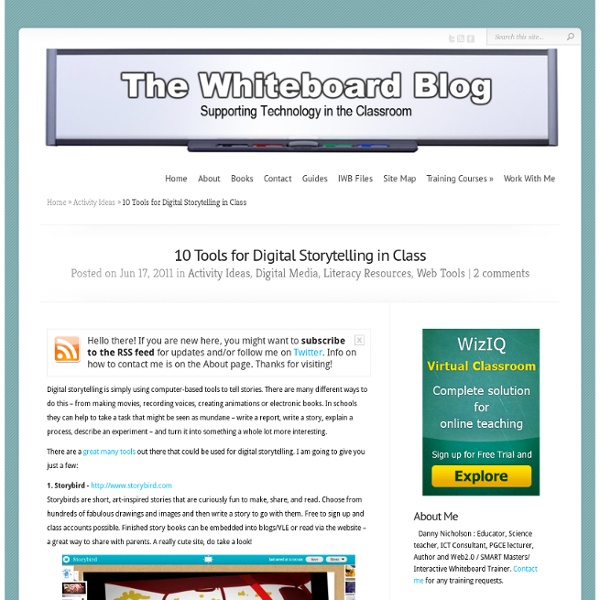10 Tools for Digital Storytelling in Class
Digital storytelling is simply using computer-based tools to tell stories. There are many different ways to do this – from making movies, recording voices, creating animations or electronic books. In schools they can help to take a task that might be seen as mundane – write a report, write a story, explain a process, describe an experiment – and turn it into something a whole lot more interesting. There are a great many tools out there that could be used for digital storytelling. 1. 2. 3. 4. 5. 6. 7. 8. 9. 10. For more help and information on Digital Storytelling, take a look at this site from the University of Houston and for more tools you really need to take a look at Alan Levine (CogDogRoo) 50 web2.0 Ways to tell a Story wiki. Got any favourites?
6 Web-Based Alternatives to Microsoft PowerPoint
Microsoft PowerPoint is the ubiquitous solution to presentations on most computers. But with a profound move to the cloud, there’s a range of alternatives (most free) based on the web. These solutions offer not only features similar to the desktop app, but the ability to load your presentation anywhere you get an internet connection and, in most cases, download a copy for offline shows and/or further customization in PowerPoint itself. In this roundup, we’ll look at a range of web-based alternatives for PowerPoint and in a future one, look at alternatives for Excel. Google Docs Google Docs is, of course, the first solution that comes to mind. The presentation tool is basic, but gets the job done in most cases. While all of this is nice, one important loss is the lack of animation. SlideRocket SlideRocket is one of the more featureful solutions on our list. I’m personally really amazed at the range of features available in this app. Acrobat Zoho Show Prezi 280 Slides Wow!
Recycled magazine coasters
My latest after-dinner-while-watching-TV project: woven coasters made from magazine pages. To make a coaster like the green one above: 1. Tear out 6 magazine pages. Cut off the ragged edge on each, then cut each page in half lengthwise. I stacked them and cut them all at once with an X-acto knife and ruler. 2. 3. 4. 5. 6. 7.
Related:
Related:



